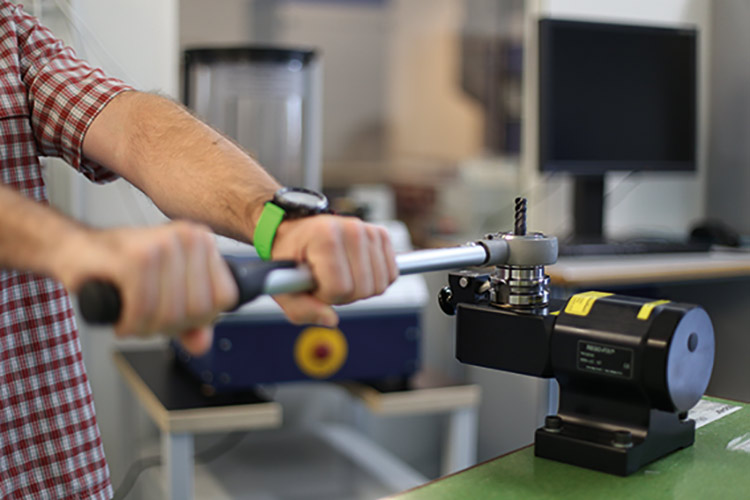Clamping plays a significant role in the concentricity and service life of drilling and milling tools and this is the case for tools with a small diameter in particular.
In addition to the tool, the accuracy and the surface quality of the geometries to be machined also plays an important role in exact tool clamping. Up to now, tools with diameters between 1 and 10 mm were predominantly clamped in standard (ER) collets. This clamping system has proven itself to be economical and universal around the world. However, it was originally designed to quickly and securely clamp larger tools with diameters of between 5 and 25 mm. It therefore does not always meet the special requirements of high concentric accuracy with a lower µm.
Designed for small tools and high speeds
Manufacturing shops work significantly better with the micRun clamping system that was developed by Rego-Fix, Tenniken (Switzerland), than with standard collets. It is based on the functional principle of the classic collet but has a number of special features and therefore significant benefits compared to ER collets. Among other things, the MR collet and the clamping nut are carefully co-ordinated in the micRun clamping system. This guarantees an entire system concentricity of ≤ 3 µm with a 3xD projecting length. This high concentric quality can be repeated and is retained reliably even if drilling and milling tools are clamped and released several times. Clamped drilling and milling tools are perfectly aligned. Exact bore diameters and aligned holes can therefore be manufactured. Exact concentricity plays a decisive role in the quality of holes, particularly when machining using tools with small diameters. Furthermore, the high concentric precision reduces wear on the cutting edges. This ensures significantly longer service lives for the tools.
Low vibration and quiet
Another special feature of the micRun clamping system is the clamping nut that is smoothed cylindrically all around the outside. When compared to common ER collets, there are significantly fewer air vortices on it, especially at high speeds. On the one hand, the micRun clamping system therefore runs significantly quieter than clamping systems with the common, grooved clamping nuts. On the other hand, no vibrations can occur to impair rotation and centring for small drilling and milling tools.
Clamp with repeated accuracy
The micRun clamping system runs with process reliability and repetitive accuracy, as its clamping nut that is smooth on the outside is tightened and released using a special torque spanner. A tightening torque is specified for each collet size (MR11, MR16, MR25, MR32). As a result, the exact concentricity of ≤ 3 µm and the maximum transferable torques are achieved reliably in each clamping process. As the MR collet’s hole is smoothed with high precision, the transferable torques on the tool shaft beat the torques that are common for ER collets by up to 50 percent. MR collets are suitable for drilling and milling tools made of solid carbide and HSS with a shaft diameter of between 1 and 20 mm in h6 (preferred) tolerances but also up to h11. The versions with fine threads have significant benefits for collets with small diameters. The clamping nut is guided exactly without twisting when tightening. It axially presses the collet very evenly using the taper. The clamped tool therefore remains exactly aligned and works with a concentricity of ≤ 3 µm.
For high-pressure ICF and deep immersion
The versions with a slim clamping nut and equipment for internal coolant feed (ICF) are particularly beneficial for tool and mould construction if machining must often be carried out in deep cavities. In the Hi-Q/MRM version, the clamping nut has a smaller outer diameter when compared to the standard version. The Hi-Q/MRMC version is designed for internal coolant feed at high pressure of up to 150 bar. Sealing discs (DS/ER) and cooling discs (KS/ER) are inserted into the clamping nut. On the one hand, these prevent dirt and chippings getting into the collet. On the other hand, they guide the cooling lubricant through the collet directly onto the shaft and the cuts on the tool that is clamped. Chippings are therefore discharged reliably from deep holes and flat grooves and the tool cutters are cooled properly.


